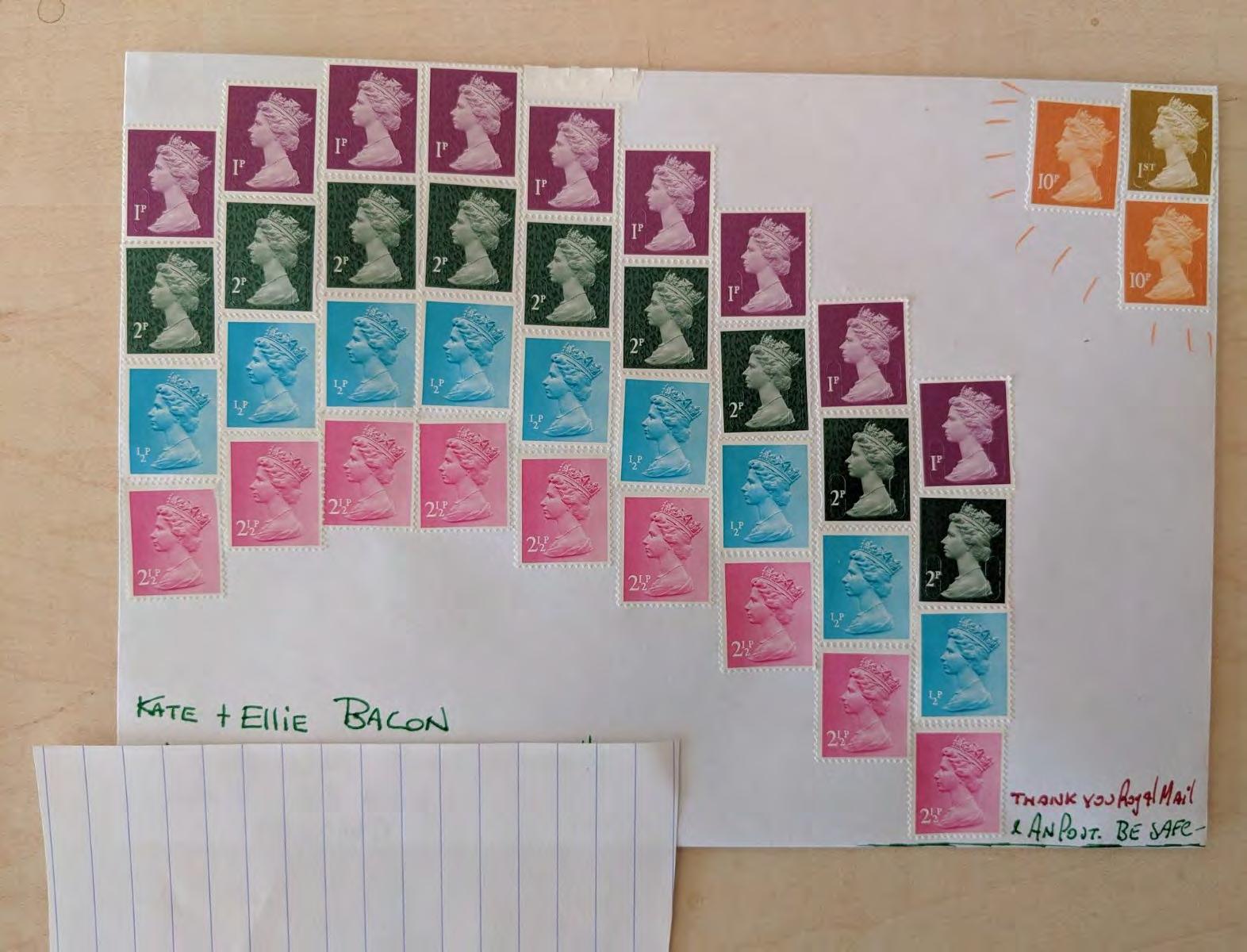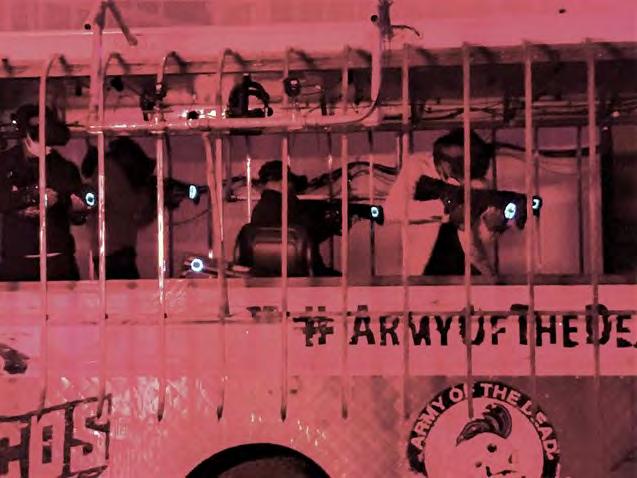
60 minute read
Art by Bob Hole
ArmedVirtual Warriors
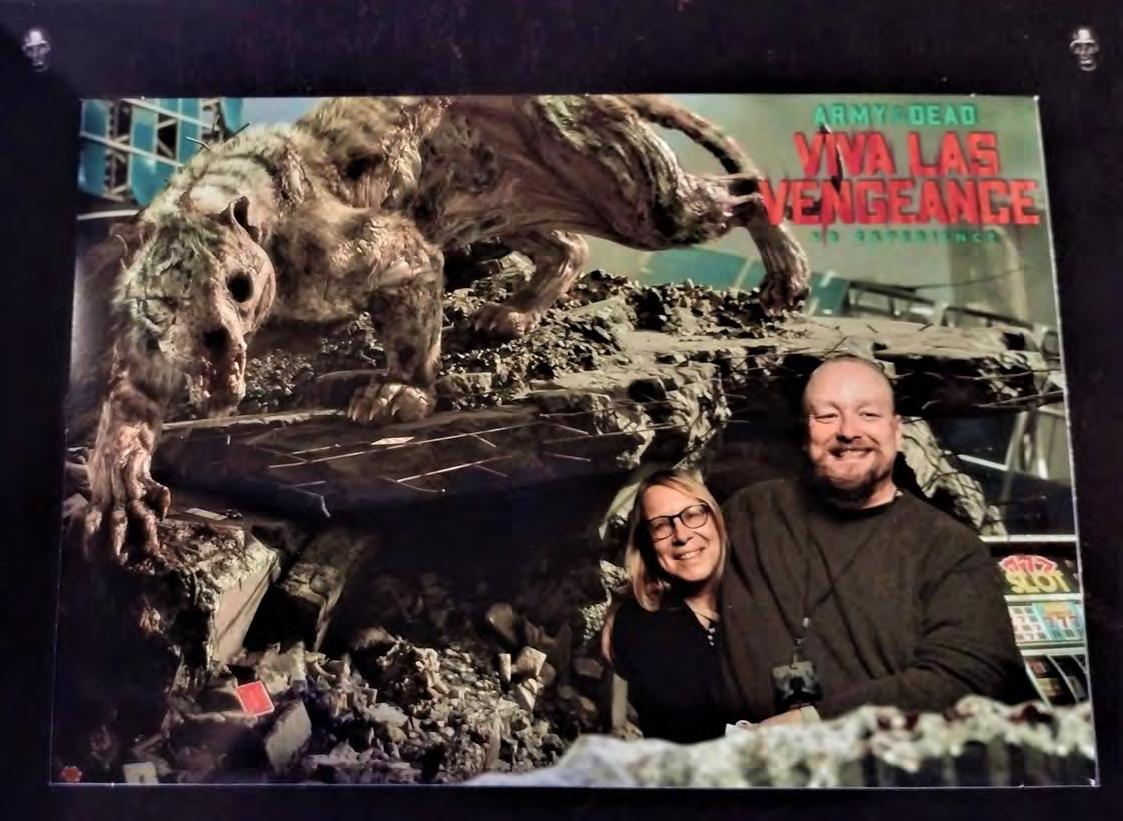
Advertisement

Interview with Marguerite Smith Discon 3 Vice-Chair
As a vice-chair for a Worldcon and a bid we wondered:
What hobbies do you enjoy to escape from your work and Worldcon responsibilities? I watch people play video games, mostly, but I still take weekly voice lessons and they help me get away from my desk. I also study languages and art when I can get the schedule structure together.
What arts and crafts would you like to spend more time on, and how would you like to develop these?
I would really like to improve my art skills. I find it very hard to get set up with space to practice, though, so in addition to taking more classes I want to rearrange my living space so that I have a pre-set "art desk" for myself.
What Fiction have you enjoyed this year - in any format - and what did you like about it?
Although I grew up as a hardcore reader, most of my fiction this year has been in visual format. Films, games, television shows, and comics, all using spoken/written and visual ways of communicating. I think I've spent the most time with Critical Role, an online "actual play" D&D show. This means that they players are all collaborating with the game master and with each other to spin a sto- ry that's hundreds of hours long.
What challenges and responsibilities do Vice-chairs face and how do you manage those?
Being a vice-chair is a new challenge. The challenges and responsibilities change depending on the structure. For example, I have specific divisions which are "mine" for DisCon -- we all have ultimate responsibility for all divisions, but there are some where I am the first point of contact and some where the other VC takes that role. In some ways, I find that shared boundary itself was a chal- lenge, as it took us all a while to figure out each other's way of working and whether there were toes to be stepped on. For Glasgow, on the other hand, I am the only Vice-chair, so those considerations don't apply. In both cases, one of my responsibilities is to protect and support the Chair, whether this means taking on things the chairs cannot do or don't have time for, lending an ear to people who don't want to bother the Chairs, or even reminding the chair that they're only human and need to take breaks too!
You were heavily involved in BWB (Brotherhood Without Banners.) What did you love about that community?
I loved how supportive we were of causes and of each other. Some of the ties I have to BWBers are now 20 years old, or close enough, and we still keep in touch and make sure people are okay.
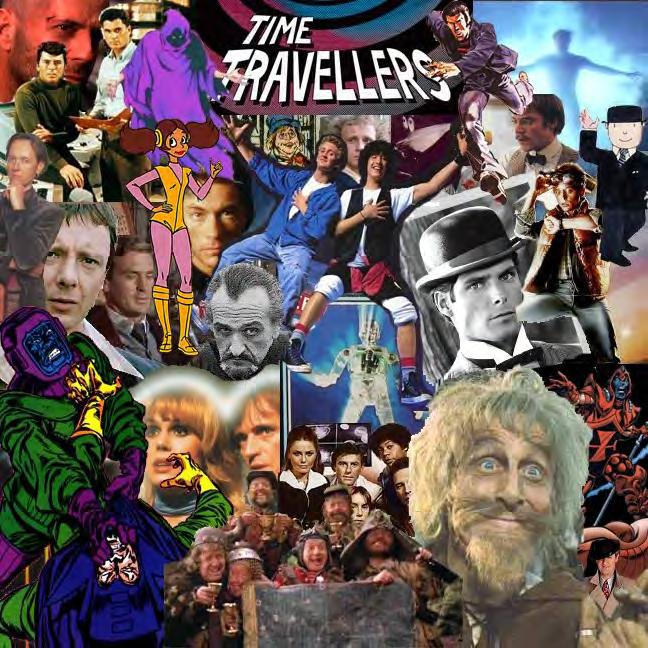
Reflections on TheLostBoys by Douglas E. Berry
I’m writing this in a hotel room in Santa Cruz, California, a few blocks from the famous Santa Cruz Beach Board- walk, first opened in 1907. Going to the Boardwalk has been a rite of passage for Bay Area teens for decades. Making the trip “over the hill” (the hill being the Coast Range) to spend long days enjoying the beach, the rides and attractions at the Boardwalk - and let’s be real here, scoring weed - was a big part of my teenage years. But the Boardwalk is also known as one of the more important settings in 1987’s The Lost Boys, which is the best vampire movie ever made. I know that’s a challenging statement, especially given the long history of vampire films going all the way back to 1922’s Nosferatu, eine Symphonie des Grauens and including such classics as Bela Lugosi making the definitive mark on vampire movies in Dracula (1931), or the even better Spanish-language version filmed at the same time as Lugosi’s film using the same sets. Look it up, it’s amazing. But I’m going to make the case that while the Dracula defined the modern vampire, it is a definition rooted in Victorian mores and concerns. Dracula draining the blood of his victims leaves them pale and listless, similar to the end stages of tuberculosis, a pale beauty also celebrated in La bohème and other works of the era. Also, Dracula cemented the idea of the noble vampire, a character of means and fine man- ners. Again, this was a very Victorian take on culture, and allows the threat to grow because a count would never be suspected of such murders!
The Lost Boys subverts that meme and does it in the best way. Set in the fictional town of Santa Carla, the movie follows Mi- chael (Jason Patric) and Sam Emerson (Corey Haim), who, with their newly-divorced moth- er (Dianne Wiest), are forced to move in with their eccentric grand- f a t h e r ( B a r n a r d Hughes). Michael, a rebellious and sullen teen, soon falls in with a group of dirt bike riding punks who ter- rorize the Boardwalk. His younger brother
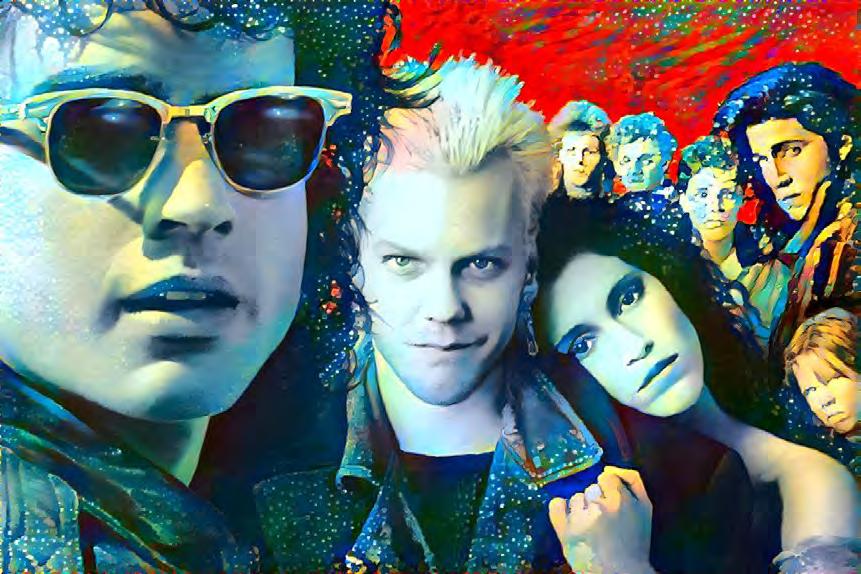
Sam encounters the Frog brothers, self-proclaimed vampire hunters who push horror comics on Sam to educate him about the threat. I’m not going to go into detail about the plot, except to say that it is both funny and scary at the same time. What really amazes me on every viewing is that while the visuals are terrifying, much of the dialogue is amazingly quotable and funny. It keeps the viewer engaged and interested in the characters.
“My own brother, a goddamn, shit-sucking vampire. You wait 'till Mom finds out, buddy!”
See what I mean? The IMDb quotes page for the film is filled with golden nuggets like these. The dia- logue keeps the film from bogging down and reminds us that these are kids as the main characters. And what’s the worst threat you can make as a younger sibling? Telling mom, of course! So, we have a well-acted movie that uses beautiful locations and some amazing sets to great effect, and I haven’t even mentioned the film’s amazing score, filled with some of the greatest artists of the late eighties. That’s still not why this is the best vampire movie of all time. So far, it’s a great vampire movie; so, what makes it the best? The vampires. The Lost Boys is one of the first big-budget movies not to portray vampires as suave, upper-crust types or mindless monsters. No, this movie shows vampires to be what they should be: predators. The vampires in this movie don’t seduce their prey, they don’t depend on deception or guile. They attack isolated targets and kill to feed. They are predators, and we are their prey. The empathy, the human connection you get in Drac- ula films, is missing here. They are only reasonably kind to Michael because he’s a recruit. Everyone else is either potential food or a threat to be removed. Even in recruiting Michael, they show a sadistic glee in tormenting him, pushing him both physically and with mental games. Until he joins them, he is just another amusement. Kiefer Sutherland’s David is a magnificent example of what an immortal hunter would become. He’s scary in the way Bela Lugosi never managed. Not even the more blood-infested Hammer films with Christopher Lee managed to portray the casual dismissal of mere humans the way David does. He is a monster. He is an apex predator who cares on- ly for his fellow vampires. The movie ends with a fantastic battle against the forces of darkness, and not one but two twists. As we fade to the credits, Echo and the Bunnymen’s cover of The Doors’ People Are Strange begins, and it’s one of those films you sit through the credits for, not because of the promise of additional scenes, but because it was so good. Every year the Santa Cruz Beach Boardwalk has a summer film series, with movies screened to an audience sitting on the beach. The highlight every year is, of course, the night they show The Lost Boys. Every year people dress up in their 80s-fashion best for the movie. Cast members have been known to show up for the event. I think next summer we’re going to make the trip over the hill to watch this movie with the lights and the sounds of the Boardwalk behind us. And after the movie is over, we’ll hurry back to the car, fearfully looking up to make sure we are not the next items on the menu.
Editor’s Note: The back of my head can be seen incredibly briefly in the 2nd comic shop scene walking along with my dad.
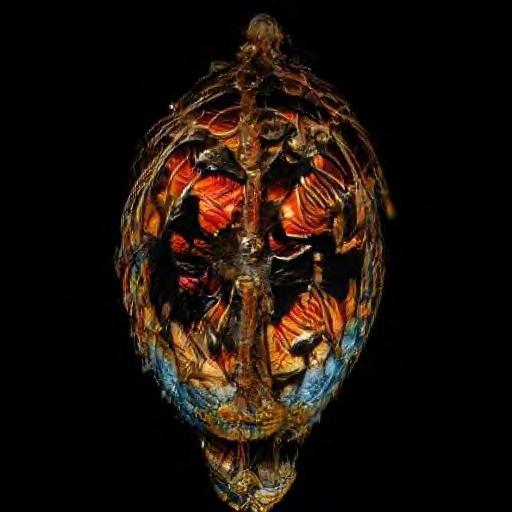
Words are flowing out like endless rain into a paper cup (John Lennon,“AcrosstheUniverse”) by Colin Harris
Throughout my life I’ve been fascinated by attempts to capture a moment for posterity. Time is by its very nature insubstantial and transient; capturing it is the essence of catching lightning in a bottle. Yet there is something in human nature which demands that we try. At a personal level of course, we do this all the time; every selfie, journal entry, blog, podcast, and ultimately every memory in our heads. But the fascination for me is in grander ambitions, whether driven by practical considerations or merely the artistic. And in the fact that whatever the original intent of the creator, future readers will find their own insights, informed of course by their own context.
Dear Sir or Madam, will you read my book?
I have always been drawn to the idea that science fiction tells us not about the future, but about the present, because the stories we create inevitably reflect the world we live in and the views we hold as a part of that world. (I have a recollection that this idea was developed in Kingsley Amis’s “New Maps of Hell” but am no longer sure!) Equally inevitably, those views are only really apparent to the future reader or watcher, whose distance pro- vides perspective. Even the most insightful creator cannot know which of their imaginings reflect unbelievable (or lucky) foresight, and which will be laughably wrong. Truth, as they say, is stranger than fiction! The Internet is surely the best example, as so many observers have noted; who would have predicted that sharing cat videos would be such a major use of all that power and opportunity? More mundanely, many pulp stories of the 1940s could not imagine a powerful computer ever needing less than a room full of hardware. Social changes are equally obvious. The ubiquitous smoking on Gerry Anderson’s Thunderbirds is dissonant to us today, yet in 1965 it was not only accepted (to the point that it was natural to include it in a children’s TV show made with puppets), but part of the landscape to the degree that I don’t suppose anyone even consid- ered a future where it might be seen differently.
Roll up, roll up for the mystery tour
One pole when I think of these time capsules is the Domesday Book. At the time a “Great Survey” to support taxation, now it is as much a part of English history as Magna Carta or the maps of John Speed. 935 years old this year, it has become one of the anchors of our history and geography. 900 years after the original Domesday, the BBC sponsored an anniversary project to create a modern up-
date, bringing together schools across the country alongside other researchers. The resulting pair of vid- eo discs featured 200,000 images, tens of thousands of maps and around a million people. Sadly the data is less accessible now than it was in 1986, although with some effort it can still be seen through the national archives. (https://webarchive.nationalarchives.gov.uk/ ukgwa/20120116155944/http://www.bbc.co.uk/ history/domesday/using-domesday). 2012’s One Day on Earth (https:// docubase.mit.edu/project/one-day-on-earth/) was the first globally crowd-sourced documentary bringing together video from thousands of contributors. And while not so specifically time bounded, I was always been drawn to the Voyager Interstellar Record (https://en.wikipedia.org/wiki/Voyager_Golden_Record) – even before I got to work on the mission myself in the mid-1980s. (In interviews, Carl Sagan acknowledged that the real audience for the record was as much the people of Earth as any extra-terrestrials; as with the famous 1968 Earthrise photo, or 1990’s Pale Blue Dot, the message of course is that we are ultimately one people sharing one small planet).
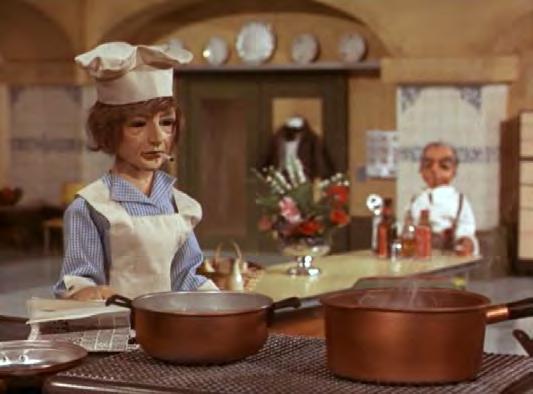

Earthrise, December 24, 1968, photo by William Anders
At a more modern scale, we have the classic “time capsule” (https://en.wikipedia.org/wiki/ Time_capsule). These seem less popular now but when I was young it seemed to be quite fashionable for town anniversaries and of course for the Millennium. Iconically of course we had the Blue Peter time capsules – not just one but five in total, buried in 1971, 1984, 1998, 2000 and 2018. (https://en.wikipedia.org/wiki/
Blue_Peter#Time_capsules). Indeed, it was only while writing this piece today that I discovered that there is an International Time Capsule Society (https://crypt.oglethorpe.edu/international-time-capsule-society/)! As to the future? The Internet, combined with ever-reducing storage costs, means that our ability to look back – not just at a few points in time but at almost any point in time – is continually expanding. The sheer scale of the Wayback Machine (https://archive.org/web/) at over 630 billion web pages is almost unimaginable. In 2014, Google Maps experimented with the facility to look at the way Street View changed over time (https://maps.googleblog.com/2014/04/go-back-in-time-with-street-view.html), although I suspect this still only works for a limited number of locations (shame!).
There are places I'll remember
As you will have guessed, I’m a great believer in the value of capturing information for posterity. The more the better, as many things which seem mundane to the writer may be unknown and unexpected for future readers. “The past is a foreign country”, as L. P. Hartley wrote in The Go-Between. In terms of science fiction, I have a soft spot for Howard Waldrop’s “What Makes Hieronymous Run” as time travellers arrive in the 16th Century to find that Bosch’s paintings were not just imagined. But the truth can seem almost as strange. My favourite anecdote here is about our changing sleep patterns; in medie- val times (before artificial light) it was common for people to have “first sleep” and “second sleep” with a waking period between (see https://www.medievalists.net/2016/01/how-did-people-sleep-in-the-middle-ages/ and https://psychology.fandom.com/wiki/Segmented_sleep). References to this pattern start disappearing from the late 17th Century and now I suspect most people would not believe you if you told them this used to be quite normal. What strikes me is not so much that we’ve lost the pattern, but we’ve lost the memory that it used to be how we lived. I wonder how many other things have fallen down the cracks between the paving stones of history?
Section titles by Lennon and McCartney, in appreciation of Peter Jackson’s “Get Back” (https://en.wikipedia.org/wiki/ The_Beatles:_Get_Back) which is itself a time capsule.

Night ofthe Comet by Juan Sanmiguel
There is a long list of films that I have heard good things about, but I have not seen. Finding time is usually the challenge. A special presentation at the local art house theater, a showing on television, or a film finds itself on a streaming service I am subscribing to provides an opportunity to finally see these films. One film I have recently caught up on was Night of the Comet from 1984. Eleven days before Christmas, the world awaits the passage of a comet. Eighteen-year-old Regina Belmont (Catherine Mary Stewart) spends the night with her boyfriend in the steel lined projection room of the movie theater they work at. Regina’s younger sister Sam (Kelli Maroney) has a fight with their stepmother and sleeps in the backyard shed. The next morning, Regina finds that the skies are red and there are piles of powder mixed with clothing. She is attacked by a zombie like creature. Regina fights it off and escapes to her house and meets up with Sam. They realize something cataclysmic happened during the previous night. Hearing the local radio station is still live, Regina and Sam go there and find the station is automated. They also find another survivor, truck driver Hector Gomez (Robert Beltran). They use the station’s transmitter to try and find help. They are heard by mysterious group of scientists in the desert who seem to know what is going on. Hector goes to San Diego to check on his family while the girls stay put. Can the survivors figure out how to stay alive in this frightening new world? What are the scientists up to? Will the scientists help the survivors? The film takes itself seriously but allows for moments of levity. It is not relentlessly dreary like The Walking Dead. While waiting for Hector to come back from San Diego, Regina and Sam try on some new clothes at a local mall to tune of Cyndi Lauper’s “Girl’s Just Want to Have Fun”. Sadly, the party is shutdown by some boys who were already at the store and starting to zombie-fy. The characterization is quite positive. Regina and Sam were raised by a Special Forces father who left them with their stepmom while being deployed in Central America. The girls know how to fight and take care of themselves. They can outfight and outwit the zombies and the scientists. One scientist Audrey White does agree with the plan the rest of her team is following and does what she can to help the girls and Hector. Hector is also competent in the survival department and treats the girls with re- spect. (WARNING: When the girls are discussing Hector’s virtues, a homophobic term is used which was sadly common in the 1980s)
The film was made for under a million dollars. The film makers put their small budget to good use. The underground thinktank headquarters of the scientists is the most ambitious set and it is convincing. The zombie make up is effective and scary. The cinematography conveys the emptiness of the town the girls live in. The strong production values keep you believing in th is world. The film shows that a well thought story and good production planning is all that is needed to tell a strong science fiction story.
When the film was made, nuclear war was the biggest worry of the day. There were a lot of films at the time like The Day After, Threads, and the Mad Max films that had a lot of gloom and doom. It was nice to see a film where there is some opti- mism and hope. Things we can always use.
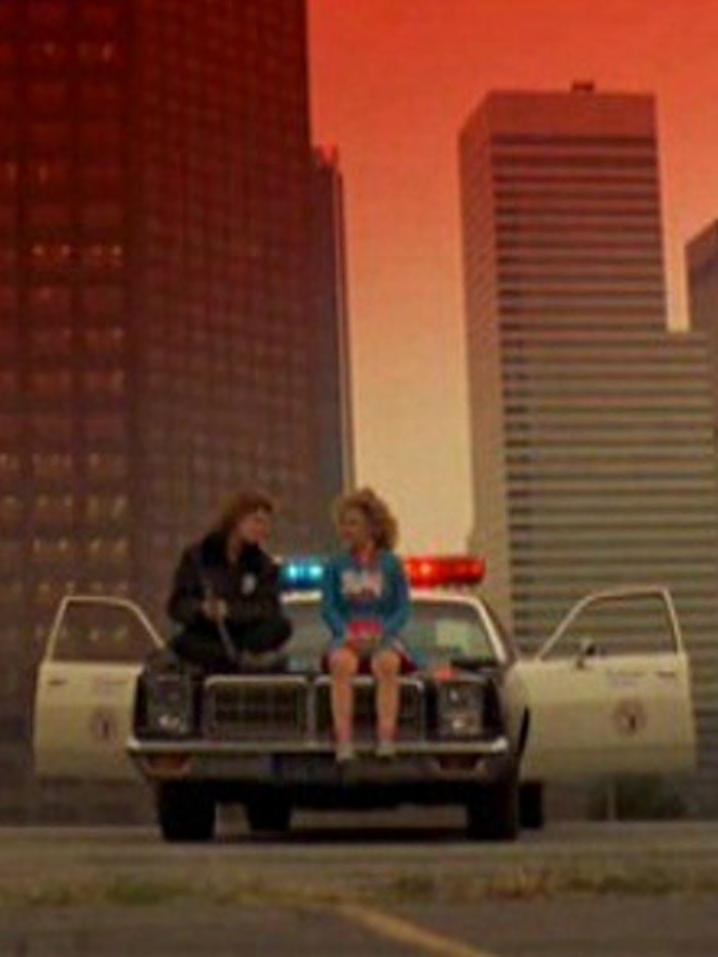
Film Review: The JungleBook(1967) by Bob Hole
The Jungle Book (1967) Walt Disney Animation Studios & Walt Disney Productions Produced by Walt Disney Directed by Wolfgang Reitherman Starring the voices of: Phil Harris (Baloo the Bear) Sebatian Cabot (Bagheera the Panther) Bruce Reitherman (Mowgli the Man Cub) George Sanders (Shere Khan the Tiger) Sterling Holloway (Kaa the Snake) Louis Prima (King Louie of the Apes) Clint Howard (Elephant Child)
This was the first movie I ever saw in the theater. It had just been released, and my mom took me on a spe- cial trip to a huge movie house in Oakland with a balcony, and that’s where we sat. I don’t remember much else, but I fell in love with it then. I watched it again today, and I’m still in love with it. It now, of course, has a warning at the beginning because it does use some racial stereotypes. This is particularly true of the voices of the apes, so you need to watch for that. There is a colonial atmosphere to the piece, with lots of English accents, and positive references to Queen Victoria and the Raj. The story takes place sometime in the late 19th century or early 20th . It’s not really specified. The orig- inal stories were written in the early 1890s, by Rudyard Kipling (30 December 1865 – 18 January 1936). Though this particular series of stories were written while the Kipling family lived in Vermont, the author was a person born in colonial India, and steeped in the rightness of England and Empire, though also a Fran- cophile. He has had many harsh critiques of all of his work regarding his treatment of non-Europeans. Kipling’s Mowgli stories too were the result of colonialism, as they are loosely based on Indian stories and fables. This particular set intrigued Kipling as a child because of its talking animals. This is something that I fer- vently relate to. The film follows the story of Mowgli, a human child that is found in the forest by Bagheera, a black leopard, not eaten and fostered by a pack of wolves who also fail to eat the infant. The bulk of the film takes place when the boy turns ten and a tiger that hates humans, Shere Khan, returns to their area of jungle. Then Bagheera and eventually Baloo work to get the kid to a nearby village to be safe with his own kind. The film is quite beautiful to watch. It is the last animated film personally overseen by Walt Disney, and he pulls out all the stops here, but one. The backgrounds are wonderfully rendered, and the motion camera that the Disney studio invented to bring the special depth to their animated backgrounds work wonderfully.
The voice actors are perfectly cast. Sebastian Cabot, who at the time was just beginning his run as the indominable butler/nanny Mr. French on the TV show Family Affair brings just the right tone to butler/ nanny Bagheera. George Sanders, one of my very favorite actors, brings a very playful menace to the voice Shere Khan the Tiger. In the original stories he was never so likable and doesn’t get away quite so easily as he does in this version. I want to stop a moment and highlight the animation of Shere Khan. The movement they gave to the tiger was absolutely brilliant. The tiger moves like a tiger. He is perhaps the best and accurate piece of animal animation in all of Disneyana. Watching the movement is watching a tiger. Baloo, voiced by Phil Harris, is for many the most memorable character in the film. The character brings humor, pathos, and fun to the screen. And most people will recognize his signature jazz song “Bare Necessities” (written by Terry Gilkyson). Even modern kids are getting it if they listen to any Disney related media.
The one character I’m not totally enamored of is King Louie (well voiced by Louis Prima). It’s nothing really against him in himself, but this is one where the studio blew it. First, he’s credited as king of the apes. That’s fine, but he’s the only ape around. Everyone else in his kingdom is a monkey. Monkeys (mostly) have tails, and apes never do. Second, orangutans do not live in India, let alone north- ern India where these stories are set. All the other animals shown could have really been at the place and time the movie depicts. They are all pretty good depictions, too. Louie is not. Third, Louie is actually a female. As an adult male, orangutans have large pads on each side of their face. Louie has the face of a female orangutan. Putting the second and third of those criticisms together, it has been suggested that Louie was an FTM transgender ape, thrown out of his native lands, and then landed in north-central India where he rose to prominence and power so quickly nobody challenged him in his right to be king. Works for me. And makes him much more of a fun char- acter. And then he gets the addition of the great song “I Wanna Be Like You (The Monkey Song)” by Robert and Richard Sher- man.
Okay, I’m enamored. The one stop that they failed to make for the film? They did no character art shading. All the charac- ters are two-dimensional flat paintings. This is true even with the otherwise marvelous work done on Shere Khan. With a little effort to bring up the quality of that artwork, I think the film could have been whole groundbreaking, but apparently they just weren’t ready for it. To me, this is a sad oversight. Overall, the film is a great show. The story does not exactly follow Kipling, but is good as it is, and much happier in tone and story. The ending is not exactly predictable to kids, but that moment that puberty hits is seldom recognized in such a profound and sudden way. There are two notable Star Trek connections in the film. John Abbot voices the wolf leader Akela.He played the council leader Ayelborne of the Organians in “Errand of Mercy” (s1e26, 1967). Also is the partof the baby elephant that befriends Mowgli. He is voiced by Clint Howard, who had just been seen (not heard) as Balok, commander of the Fesarius in “The Corbomite Maneuver” (s1e10, 1966). And yes, 53 years later, I’m still in love with this movie, faults and all.


Five Classic Suicidology Texts by Chuck Serface
Suicide is the tenth leading cause of death in the United States. It’s the second leading cause of death for those 15-24years-old. In 2019, the latest year for which we have data available, 47, 511 individuals completed suicide with firearms accounting for 23,941 of these. The national suicide rate, again for 2019, was 13.9 per 100,000, age adjusted. Males tend to complete suicide while females make more attempts. This relates to method. Men traditionally go for guns, the most efficient means, while women prefer overdoses, asphyxiation, or cutting. But firearms trends are changing year by year. Women are catching up. White males consistently top suicide rankings, the 2019 rate for them being 26.1 per 100,000 and for nonwhite males 12.2. White women’s rate was 7.0 and nonwhite is 3.4. The latest data available from a 2017 study for LGBTQIA+ youth shows that 39% have seriously pondered suicide while 71% reported feeling sad or hopeless for at least two weeks over the past year. No shock there, since two out of three have revealed others have tried convincing them to change their sexual or gender identities, with youth who’ve undergone conversion therapy more likely to try suicide than those who haven’t. 71% from the study shared having suffered discrimination, while 58% of transgender and nonbinary participants admitted they were not allowed to use restrooms consistent with their gender identity. I lifted these statistics from suicidology.org, the website for the American Association of Suicidology (AAS), the national organization that accredits hotlines and services across all states. Interested parties can visit their website for more information, statistics, reading lists, webinars, and other tools designed to educate the public. As a suicide-prevention counselor, I’ve been asked why persons kill themselves. There’s no easy answer to this question because suicide’s a complex phenomenon, one explored by psychologists, sociologists, theologians, philosophers, and, of course, through art, music, and literature. First things first, though. More important than understanding why is knowing what to do if you or someone else feels suicidal. The AAS website offers information on detecting signs of suicide and how to intervene. Also, call the National Suicide Prevention Hotline at 800-273-8255 where I and other trained counselors are ready to help 24/7.
Why do humans kill themselves? How do you answer such a huge question? Or start to answer? I’m no profound thinker, but I’ve read several books presenting various theories. The following five are classics either by popular consensus or because they reign so for me. I’ll start with Emile Durkheim.
Suicide: A Study in Sociology by Emile Durkheim (1897)

A French philosopher, Emile Durkheim treats suicide in association with society, which is no surprise – he was a protégé of Auguste Comte, the father of sociolo- gy. His taxonomy is as follows:
Egoistic Suicide Egoistic suicides largely are self-centered, since this type of suicide occurs when people lose connection with society, because they’ve somehow failed to meet social codes or mores. Social revolutions, periods when conventions upon which humanity has relied lose meaning, apply here.
Altruistic Suicide By killing ourselves, we could save others from suffering. Controversially for me and I strongly suspect for more than one of you, Durkheim discusses Indian sati under this classification. Think about soldiers who throw themselves over gre- nades to lessen explosive blasts as well.
Anomic Suicide
These suicides relate to sudden changes that upset emotional equilibrium and radically shatter our relationship with society. Today, we define crises as occurrences that pull us from psychological homeostasis and challenge our coping mechanisms, basically anything that cuts us off from the outside world. Deaths, 49 November 27th, 2021
Fatalistic Suicide
This involves societal regulations that overly restrict individuality. Durkheim cites suicide among slaves and childless older women for examples. Suicide, then, represents an escape from oppression.
Although he contributed foundational efforts, Durkheim’s theory focuses narrowly on sociological elements, eschewing psychological, biological, and idiosyncratic reasons behind suicide. Suicide has multiple causes and facets, and my choices for this list reflect this position.
The Suicidal Mind by Edwin Shneidman (1996)
In 1949, Edwin Shneidman was working for the Veteran’s Administration, Los Angeles, and his supervisor instructed him to write letters to two widows whose husbands had committed suicide. Upon examining their files, Shneidman discovered that one had writ- ten a suicide note. This sparked his curiosity, and over just a few weeks he gathered 700 letters, and so began his life’s work. Today we revere Shneidman for not only coining the term “suicidology,” but for forming the AAS and with his colleagues Norman Farberow, Robert Litman, and Mickey Hellig inspiring an explosive increase in studies of suicide. His theories have massively influenced how I approach my craft. For Shneidman, suicide stems from psychological pain, what he calls “psychache.” Thwarted or distorted psychological needs elevate suicide risk. Suicide and mental illness overlap because mental illnesses cause perturbation, frustration, unease, upset, and pain. Self-lethality does not necessarily mean mental illness. Psychache is very subjective mental pain that will not go away. As a psychologist and Professor of Thanatology at UCLA, Shneidman instructed that those wishing to help must alleviate that pain to reduce suicide. Trust me, this is easier said than done, but this approach allows for flexibility when trying to understand an individual’s attachments and how loss or the threat of loss enhances danger.
I chose The Suicidal Mind for this list because it’s the most accessible of Shneid- man’s works. I also suggest Definition of Suicide and Suicide as Psychache: A Clinical Approach to Self-Destructive Behavior. He dedicates one section from Definition of Suicide to analyzing Captain Ahab’s monomania in Moby-Dick. Ahab, he concludes, suffers from sub-intentioned suicide, an unconscious drive toward death. Can you say Renaissance man? Then you can say Shneidman. That Shneidman was friends with Hershel Parker, a giant among Melville scholars, didn’t hurt, however.

The Savage God by A. Alvarez (1971)
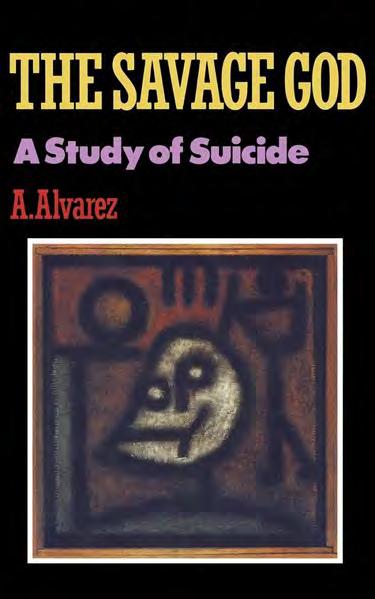
First came Durkheim the sociologist, and then Shneidman the psychologist. Now, A. Alvarez, a writer, poet, and literary critic, enters the discussion. Alvarez refers to suicide as a “closed world,” and he says about his own suicide attempt: "I had entered the closed world of suicide and my life was being lived for me by forces I couldn't control.” He begins by considering Sylvia Plath and her suicide, and in- deed he later reveals much about his own predicament and those of his parents, both of whom attempted suicide as well. Alvarez at junctures reads like an ex- tended Confessional poem, but more about Confessional poetry later when I in- troduce Middlebrook’s Anne Sexton. Alvarez approaches his subject from literature, art, philosophy, psycholo- gy, sociology, religion, and other disciplines to offer a truly multi-disciplinary over- view. One passage impacted me: When neither high purpose nor the categorical imperatives of religion will do, the only argument against suicide is life itself. You pause and attend: the heart beats in your chest; outside, the trees are thick with new leaves, a swallow dips over them, the light moves, people are going about their business.
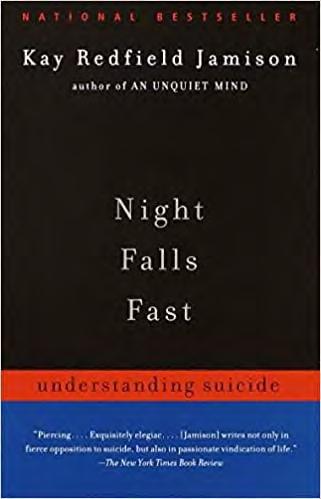
Psychologist and Professor of Psychiatry and Behavioral Sciences, Kay Redfield Jamison co-directs the Mood Disorders Center at Johns Hopkins University. James herself has bipolar disorder which greatly influences her Night Falls Fast: Understanding Suicide. She notes that suicide rates for Americans under 40 had tripled over the 45 years before her book was published, and like Shneidman and Alvarez she casts a wide net, drawing upon history, anthropology, biochemistry, genetics, and epidemiology. Given her own mental-health status and that she’s a psychologist, we shouldn’t be surprised that she emphasizes mood disorders and schizophrenia and their correspondences with suicide. She shares about herself: I was seventeen when, in the midst of my first depression, I became knowledgeable about suicide in something other than an existential, adolescent way. For much of each day during several months of my senior year in high school, I thought about when, whether, where, and how to kill myself. I learned to present to others a face at variance with my mind; ferreted out the location of two or three nearby tall buildings with unprotected stairwells; discovered the fastest flows of morning traffic; and learned how to load my father's gun. It was not the kind of education one expected to receive in high school. I attended suicidology conventions during the early 2000s, and this book always generated deep conversations. One contingent found Jamison’s statistics a bit alarmist, others felt she relies heavily on medical models, but none could deny that she comes from the heart, from a drive to helping others survive.
Anne Sexton: A Biography by Diane Wood Middlebrook (1991)
The critic M.L. Rosenthal introduced the term “Confessional poetry” while re- viewing Robert Lowell’s collection, Life Studies. Confessional poets employ direct language and present images derived from private experience – emotional break- downs, mental illness, childhood trauma, and any self-referential revealing are fair game, and overall, their output displays a true break from traditional verse up until that time. During the 1950s and 1960s, Confessional poetry enjoyed huge popularity and poets working within this school included Robert Lowell, Sylvia Plath, John Berryman, W. D. Snodgrass, and Anne Sexton. Middlebrook’s biography isn’t a suicidology text per se but an extremely fine narrative about an award-winning poet, mental-health patient, and eventual suicide. I received this book for my birthday the year it was released amid the controversy surrounding Middlebrook using audio recordings of therapysessions between Sexton and her psychiatrist, Martin T. Orne. It was Orne who urged Sexton to write poetry toward cathartic ends, and she rode it right into a Pulitzer Prize.
Remember that Edwin Shneidman began his career by examining suicide notes, even bringing the phrase “psychological autopsy” into the professional lexi- con. Biographies are important sources for understanding the suicidal mindset.
Middlebrook’s is one of the best I’ve ever read. She’s thorough but fair, a monu- mental task. Sexton lived turbulently, and lesser writers might have made an ex- ploitative mess of it. This in the end is a truly compassionate recounting. The market’s flooded with suicidology books, from the scientifically dense to ones intended for general readers. Currently, I’m after my crisis-worker certification from the AAS, which requires that I read several texts about crisis intervention, suicide prevention, and grief counseling. I’m looking forward to what I call the Thomas Join- er Quartet: Why People Die by Suicide, Myths about Suicide, The Perversion of Virtue: Understanding Murder-Suicide, and The Interpersonal Theory of Suicide: Guidance for Working with Suicidal Clients. One day, I’ll review Joiner’s oeuvre separately. Whatever you decide to read or however you answer why people end their lives, know that you’re not the only one feeling pain. Some may feel their subjective woes so intensely that they’re contemplating a permanent opt-out. But we can face distress together, and together we can persevere.
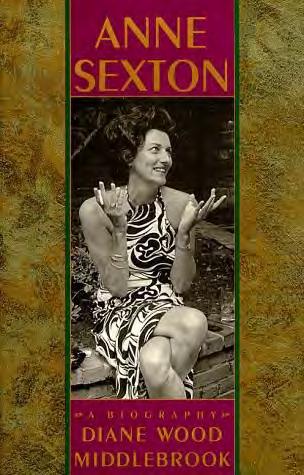
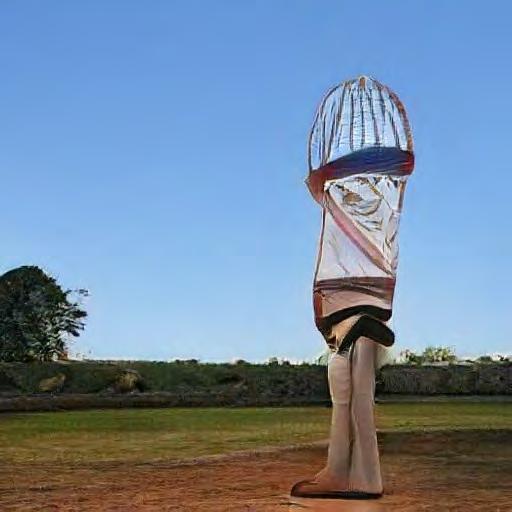
Footnotes to a Biographical Article Never Written by Steven H Silver
123456789
1—Ellis Worthington-Downs (June 26, 1893 - January 8, 1956) was born in Banbury, England in a small house near the corner of Bar Street and High Street. He immigrated to Ireland after being invalided out of the BEF following the Battle of Loos when he was afflicted by the German’s chlorine gas attack. After the Easter Uprising took place, Worthington-Downs made the decision to move to the United States, although he wasn’t healthy enough to effect the move until 1918. Even after the move, he continued to suffer physical effects of the gas attack.
2—Miscellany was founded by James Elgar in 1887 to take advantage of the popularity of Frank Munsey’s Argosy, although Miscel- lany never achieved the level of success, or, frankly, professionalism of Argosy. Many authors only submitted to Miscellany after Argosy and similar magazines rejected their work with the result that Miscellany was seen as the “poor man’s Argosy.” Neverthe- less, many authors who were discovered by Elgar and his successor editors eventually did go on to achieve greater success and fame in Argosy, Blue Book, and similar magazines.
3—Jerome Walton (April 1, 1914 - ?) was born in Thunder Bay, Canada in a large house overlooking Lake Superior. His family moved to the United States when he was just a boy and he became a U.S. citizen. He sold his first story to F. Orlin Tremaine (January 7, 1899 – October 22, 1956) at Astounding and continued to sell once John W. Campbell, Jr. (June 8, 1910 – July 11, 1971) took over the reins as editor. Walton grew up reading Worthington-Down’s fiction and particularly cited “The Voice That Wasn’t Heard” as a story influential in his own decision to become an author.
4—At a panel at Windycon in 2005, Frederik Pohl (November 26, 1919 – September 2, 2013) made the claim that Worthington- Downs collaborated with Walton in 1937 as Worthington-Downs’ career as an author was winding down and Walton was on the rise. There is no indication that such a collaboration ever occurred (Pohl believed it was on the story “The Race Is Won,” which Wal- ton published in Amazing under the pseudonym “Walford L. Pickering”). Letters found in T. O’Connor Sloane’s (November 24, 1851 – August 7, 1940) archive seem to indicate that Walton attributed his inspiration for the story to Worthington-Downs, but wrote it himself, only electing to use a pseudonym because two of his stories were slated to appear in the same issue of the magazine.
5—Worthington-Downs final story, “Never Between Sea or Sky” was slated to be published in the December 1943 issue of Camp- bell’s Unknown, but fell victim to Street & Smith’s decision to cancel the magazine after the October 1943 issue. The story never found another publisher and is only known through Campbell’s correspondence and a torn manuscript page found in the archives of A.E. van Vogt (April 26, 1912 – January 26, 2000), although it is unknown how the fragment came to be in van Vogt’s possession. Sadly, this was Worthington-Downs’ only sale to Campbell and represented a breakthrough in his publishing career after 23 years of publishing stories in second tier magazines.
6—Worthington-Downs’ last published story was the non-genre “The Geog Gup,” which appeared in Boys’ Adventure Tales in No- vember 1940. There is speculation that during World War II, Worthington-Downs worked as a printer’s devil for the home front edition of Stars and Stripes, but these claims have been disputed by researchers who believe that the lingering effects of his wounds at the Battle of Loos did not leave him with the ability to perform those tasks. In any event, the start of World War II seems to have effectively ended his career as an author.
7—Without any family in the U.S., for Worthington-Downs never married and had effectively cut all ties with his family when he left Ireland, his last thirteen years were spent living on a pension in increasingly squalid conditions. Poul Anderson (November 25, 1926 – July 31, 2001) wrote of seeing Worthington-Downs coming out of a soup kitchen in San Francisco’s Tenderloin in the 1950s, although Worthington-Downs did not acknowledge Anderson and it is quite possible that Anderson was mistaken in his identifica- tion of the author, although Worthington-Down’s last known address was in San Leandro, California, so San Francisco would not be out of the question.
8—Dying a broken and forgotten man, suffering the effects of an attack thousands of miles and four decades away, Worthington- Downs’ death went unremarked at the time, but Sam Moskowitz (June 30, 1920 – April 15, 1977) unearthed a possible record of his death on January 8, 1956 in Grants Pass, Oregon, although it is unknown how he wound up in Grants Pass from San Francisco, assuming that Anderson’s identification was correct.
9—Eileen L. O’Rourke (b.September 12, 1970) has tried tracking down Worthington-Downs’ stories and although she admits she has not been entirely successful, believes that Worthington-Downs published 178 stories during his twenty year active career, aver- aging just shy of nine stories a year. O’Rourke believes she has identified 107 of Worthington-Downs stories, or about 60% if them. According to O’Rourke, “At times Worthington-Downs approached a journeyman level of writing, but the key to enjoying his work is the ability to embrace the strangeness, almost surrealness of the ideas he is trying to get across. Had he written during the New Wave, he might have found an audience among readers and editors, but he lived and died too soon.” O’Rourke also has stated that she believes the strange imagery of Worthington-Downs’ stories is directly attributed to the damage the chlorine gas did to him on September 27, 1915.

Views of Loscon
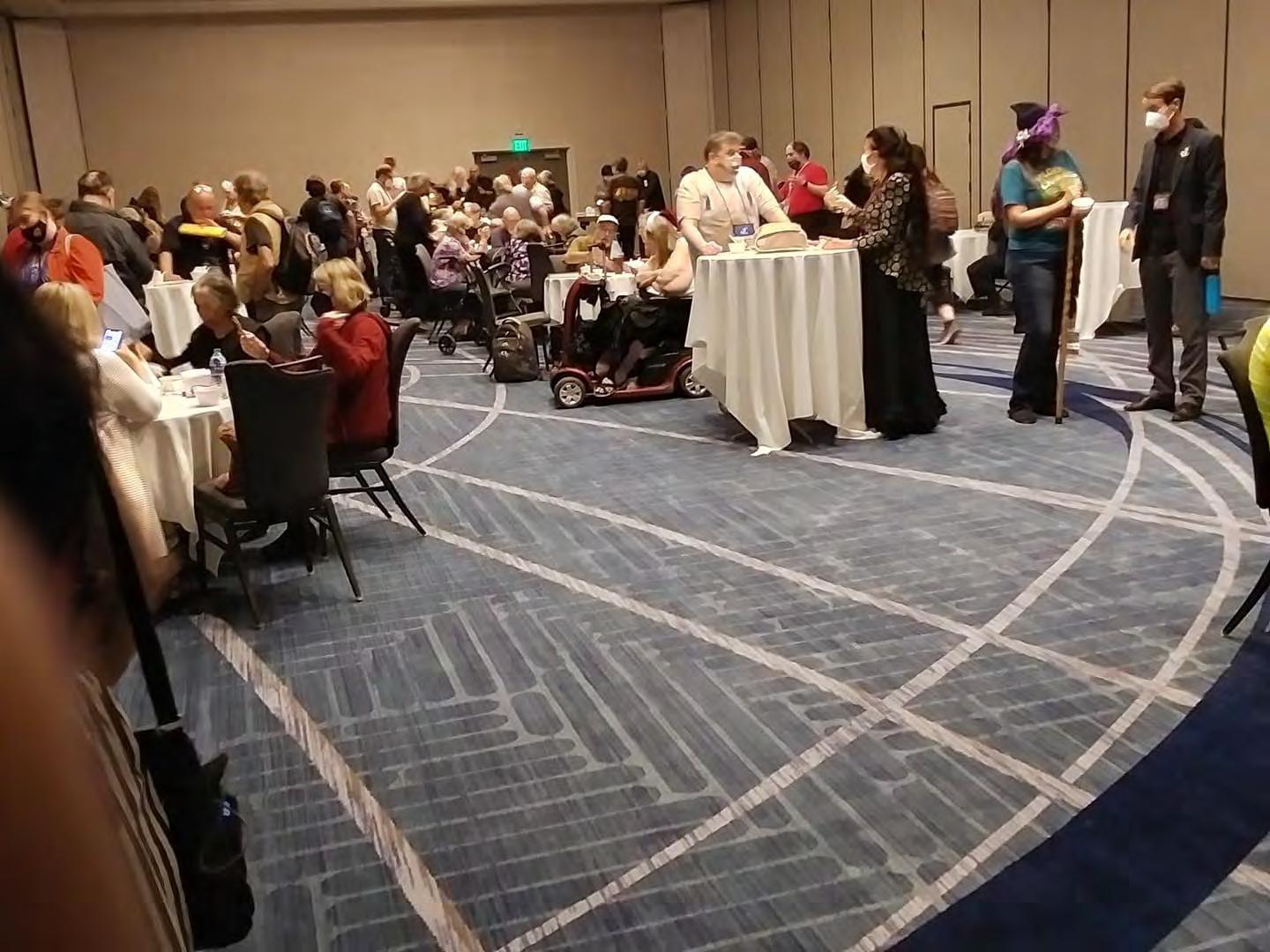






17th Floor Chili party at LosCon. Smallish attendance. Strict vaccine documentation and masks. Not always great on distancing, but everyone is masked and vaccinated. Restaurants are strict, but also not consistent in space for people out.We all came to be enjoying a chance to get out at a fully vaccinated and masked event.
Shot of the evening music show. Enjoyable, but definitely small con this year.
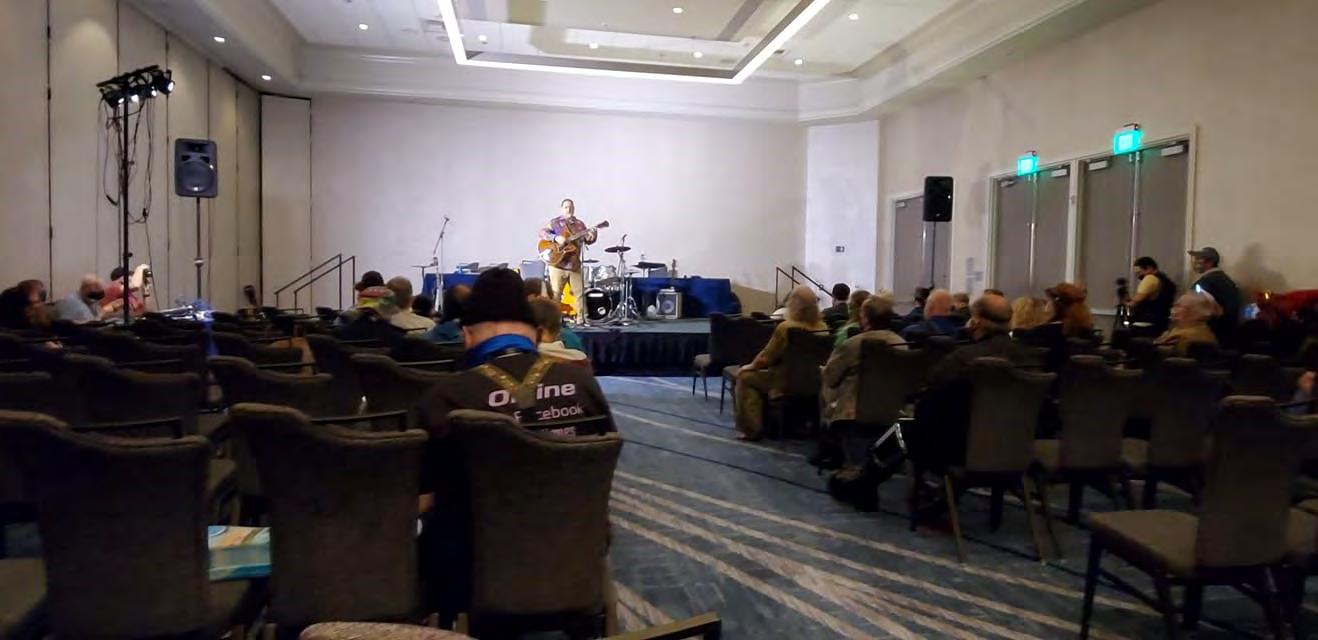





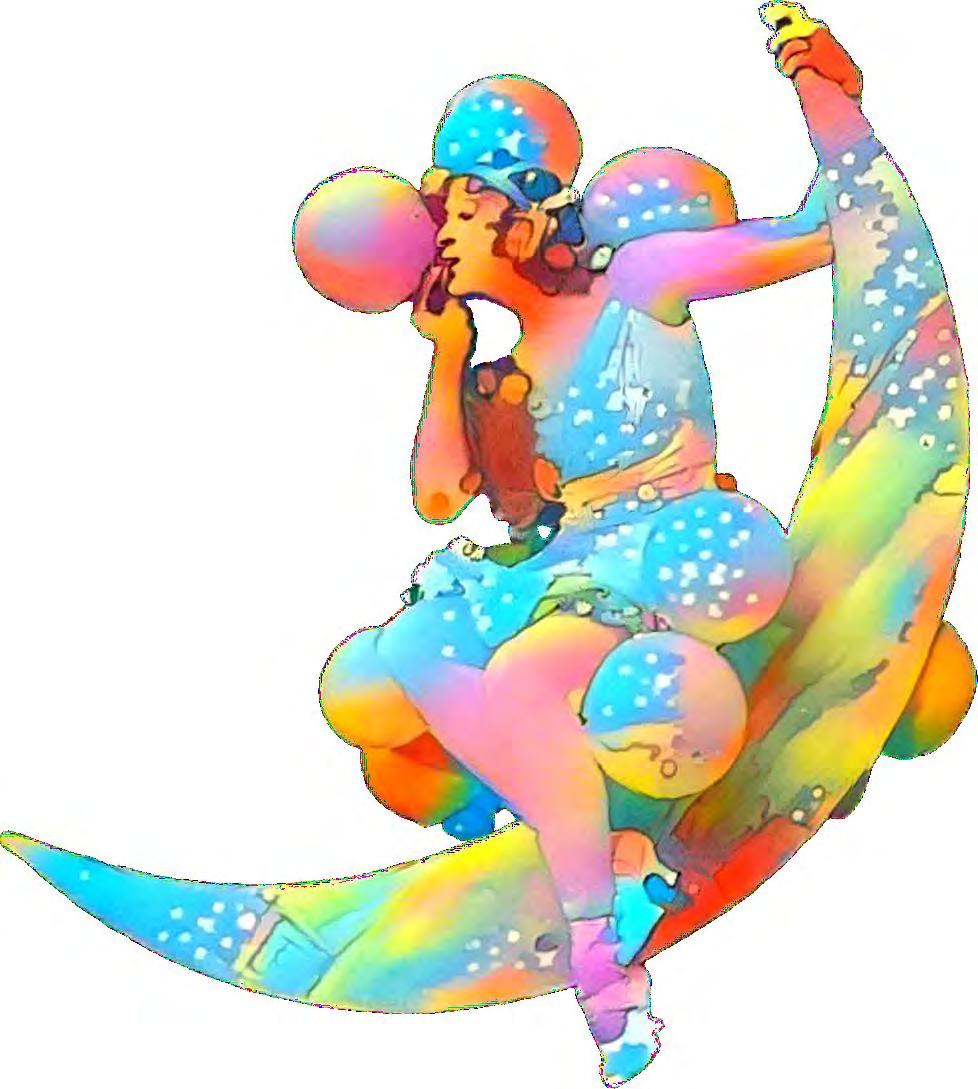
“DidYouHear What Eddie GeinDone?” by Harold Schechter and Eric Powell. Reviewed by Christopher J. Garcia
True-crime writing has its masters. Truman Capote revolutionized the genre, taking it from sleazy pulp-paper magazines to the bestseller list. Writers like Skip Hollingshead, Ann Rule, Robert Greysmith, and Mark Arax all helped establish the mode of true crime that would be used as the basis for the true-crime podcasting world. And then there’s Harold Schechter. If Hollingshead is the towering giant focusing on periodicals (Texas Monthly being his primary for years) it is Schechter who has focused on historical true crime stuff in a way that few others ever have. His research abilities, coupled with an engaging style and measured pacing. He does not drag things out with exceptional detail; he folds it in and moves along at a clip. It’s an im- pressive task. The book ‘Did You Hear What Eddie Gein Done?’ Is Schechter at his finest, but more importantly, it’s the single best explo- ration of Gein as a human being. It doesn’t quite treat him as a ghoul, which could be the best argument against most treatments of Gein, but it’s also clear he thinks Gein was a liar, and something akin to a monster. He sees him as a murderer, one who is worse than he presents himself as. It’s an interesting take. The storytelling isn’t exactly linear, but largely takes things in chunks that can be applied to a regular path of time. The way the life of Ed Gein is shown works with the art in a very fascinating way. The way that artist Eric Powell works with Gein’s evolving character design, making him slightly more off-looking each chapter, plays with ideas of criminal malformation as old as Richard III. The look becomes comical at times, like when he’s being questioned about the discovery at his Farm of Horrors. And that is the key – they tell the whole story. To tell the story of Ed Gein seems a bit redundant to a lot of true-crime nerds. We know the story. We know Psycho, Tex- as Chainsaw Massacre, and have heard a dozen podcasts cover it. We know the story, at least as much of it as you can know. Schechter and Powell tell the whole story, and to do that and not lose those of us murder junkies who have encountered this so often, you’ve got to get into the nooks and crannies while still digging the main vein. They manage that. In fact, this is a really interesting form that is actually closer related to true-crime novels than true-crime comics, the mas- ter of which being Rick Geary. There are verification notations, which is something I really need to get in the habit of using. There are several moments in the text where the conflict between the reportage and the story are evident, and they call that out. It’s a hallmark of true-crime novel-writing, and here it is used exceptionally well. It feels like a novel, but it reads like a comic, and I love that.
The art style is dense. It’s not dense with line or detail, but with heavily shaded and blended art that made it feel like pea soup in the way that you want something dealing with the weight of mental illness, abuse, and the most heinous of crimes. It’s a completely appropriate style to use with the story. Even if I wasn’t a big fan of Schechter to begin with, I could call out the most important elements to this story. The presen- tation of Ed, both in word and image, and the way that we’re granted both heavy reality and trippy fantastic moments that would not feel out of place in an Alan Moore comic. The most graphic scenes are not sensational but played for actual impact. The most important scenes are given room to exist within their own space, and that it key to a comic like this.

Why, Hawkeye, Why . . . by James Bacon
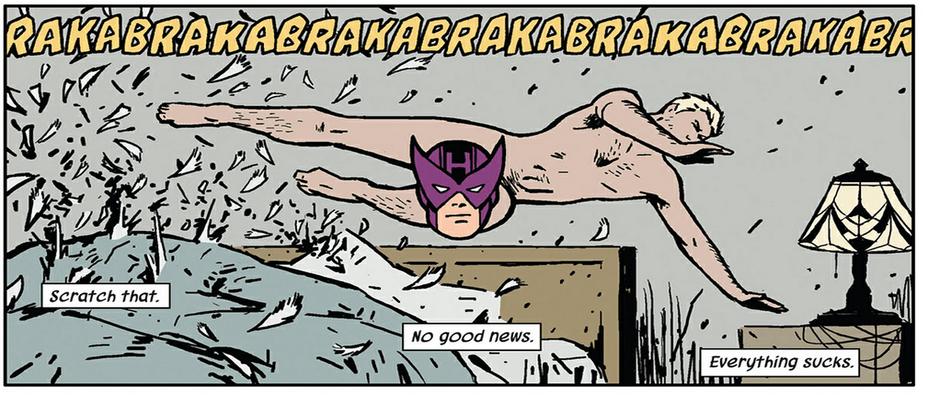
Broody, moody, quiet, boring, grumpy, that's the Jeremey Renner Hawkeye. When he is 'roosting up high in Avengers or inconsolable about his wife or Natasha (friends die, remember them well) it just comes across all wrong, a disappointingly portrayal of a fun character, of a character that is actually dreadfully human, full of failings, with a chequered past, and a litany of relationships, turned into a wooden boring lifeless family man character who seems like all the characters Renner plays. Too cool for his own shit. Like don't the Avengers have Tuesday Tea and Chat or Dance It Out well-being sessions? Like where is the work life bal- ance and the 'I'm Fine' chats? I look at the Hawkeye that Renner portrays and wouldn't let him near a train, let alone a bloody bow and arrow. I get that Renner's playing the part he has been recruited for, older, with a family, but as comic character portrayals go, it's utterly rubbish. Hawkeye was a carnival performer, originally a villain, he became a key member of The Avengers. A bit of a mess for sure, but not like the socially inept and inadequate character that Renner plays. The Matt Fraction iteration is the best, and here we find an openly honest and hilarious and well, just a real character, a slightly immature scoundrel who ends up dating a lot of girls and is not as organised as one might like, yet relatable and human and a good person. Renner plays some wooden nuclear family role, and that's not at all in touch. Indeed, in many regards his lack of maturity and ability to deal with emotions, makes him into that manly character that one wants to move away from, that fails to speak, or seek help at odds, say to the likes of Sam Wilson, who helps soldiers with PTSD, or where we are more generally, happy Without doubt, the best portrayal of Hawkeye was the 22-issue comic run on Hawkeye by David Aja and Matt Fraction which was amazing, and has shown that Marvel can produce deep and thoughtful comics. Hawkeye could have been so ropey, especially given the popularity in the Avengers movie, yet Matt Fraction penned a brilliant story, very realistic feeling yet not too grimy and the character, I feel, is much more accessible and realistic than the movie version. The artwork of David Aja has been really nice and is just right for this comic. I liked how the character of Kate Bishop a onetime Young Avenger, gets to play such an important part in this story, and the omnibus edition, if you pick that up, includes their first meeting from an issue of Young Avengers. Indeed this comic is readily available in a number of formats. And so worth reading. Now, in other iterations, Hawkeye and Mockingbird marry (1983) and while Hawkeye has no superpowers, there was a period when he had Pym particles make him Goliath.


Yet, the perfect story, the brilliant portrayal of Hawkeye, is the Aja and Fraction version. There is so much about this com- ic, it was so current at its time, dealing with real problems, and full of characters who were just great. It was so well set up. And at this time, the best thing I can do is pick up the comics and read them . . . And there is so much laughter, I forgot the total sense of humour. There is one character, who lives in the flat block that Clint Barton lives in, and he continually calls him Hawkguy, and it felt of the moment. It starts with Hawkeye falling from a building, noting that, well, he doesn't have superpower, and then in hospital. This period of times feels more real, in between one of the earth-shattering cross comic events, and in scope, takes in quite a lot, but it also benefits from David Aja's artistic style, which begins by utilising the comic frames a little differently, and adding to the images, technical aspects, angles, notations even, and then the purple, the roundel and arrow that features throughout and has been ap- propriated for the TV series. Then of course, Lucky the Pizza Dog shows up, and that is done in a wonderful way, using the comic to tell the story slight- ly out of order, but in a way that captures the imagination of the reader, The art is stunning, but the use of panels to just portray the story is uniquely brilliant. One page for instance, a phone call, between Mockingbird and Hawkeye has 24 panels, as we switch between faces talking into the phone, many pages have a panel which is an 'infographic' identifying the type of arrow being fired, and there is a hilarious placement of the classic Hawkeye Head as would have been in the Marvel Logo Masthead, to save Clints modesty. The six days issue is amazing, as we follow clint in the run up to Christmas, again the panels are worked so well, including the backs of the home electronics that Clint is trying to sort out, dates and times, and filling in so much whether it is taking down A.I.M. with Wolverine and Spiderman, or getting a beating from the Tracksuit Mafia. The Winter friends issue makes me laugh, as we follow lucky, a bit, but all in a cartoon kids’ style, with some of it perhaps influenced by Happy Tree Friends. There is an issue which has romance comic covers, which illustrate the ongoing story so well, and when we have a scene with 4 ladies, all looking side-eyed at Clint. Issue 11 takes the skill of comic book storytelling to a new level, as we follow Pizza Dog, in ‘Pizza Is My Business.’ We see everything from his perspective, with smells and visuals identified for us in a unique way that allows us to see what Pizza Dog is seeing and smelling. It is a wonderful story as we follow him and see Clint's world through his eyes. Then there is the 'Stuff what don't get spoke issue' where Clint who is deafened, has to deal with his brother, who is wheelchair bound, and there is use of sign language, and again the panels are utilised in ingenious and clever ways to portray the story, another outstanding issue, and thoughtfully done. The story is just beyond brilliant, and indeed it was such sadness to see it end. There was a dynamic between Aja and Frac- tion that is rarely seen, like Ennis and Dillon, Staples and Vaughan, Gibbons and Moore even, it is to that standard, and so enjoya- ble. There is so much laughter to it. There is such a feeling of design about every page Aja drew, and I should also mention that Annie Wu, Matt Hollingsworth, Steve Lieber, Jesse Hamm, Freancessco Francavilla and Javier Pulido also undertook artistic duties on the series, to give full credit to them. Yeah, just pick up the comic.
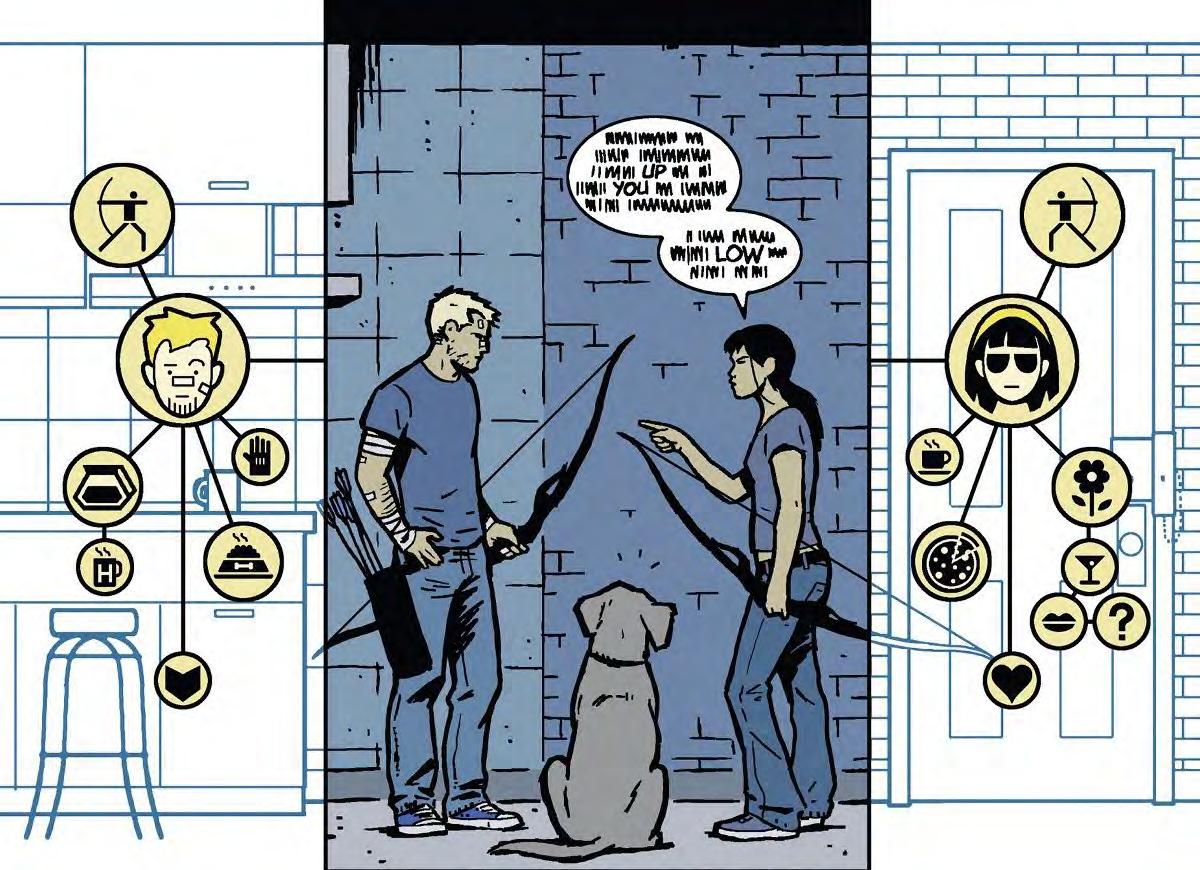

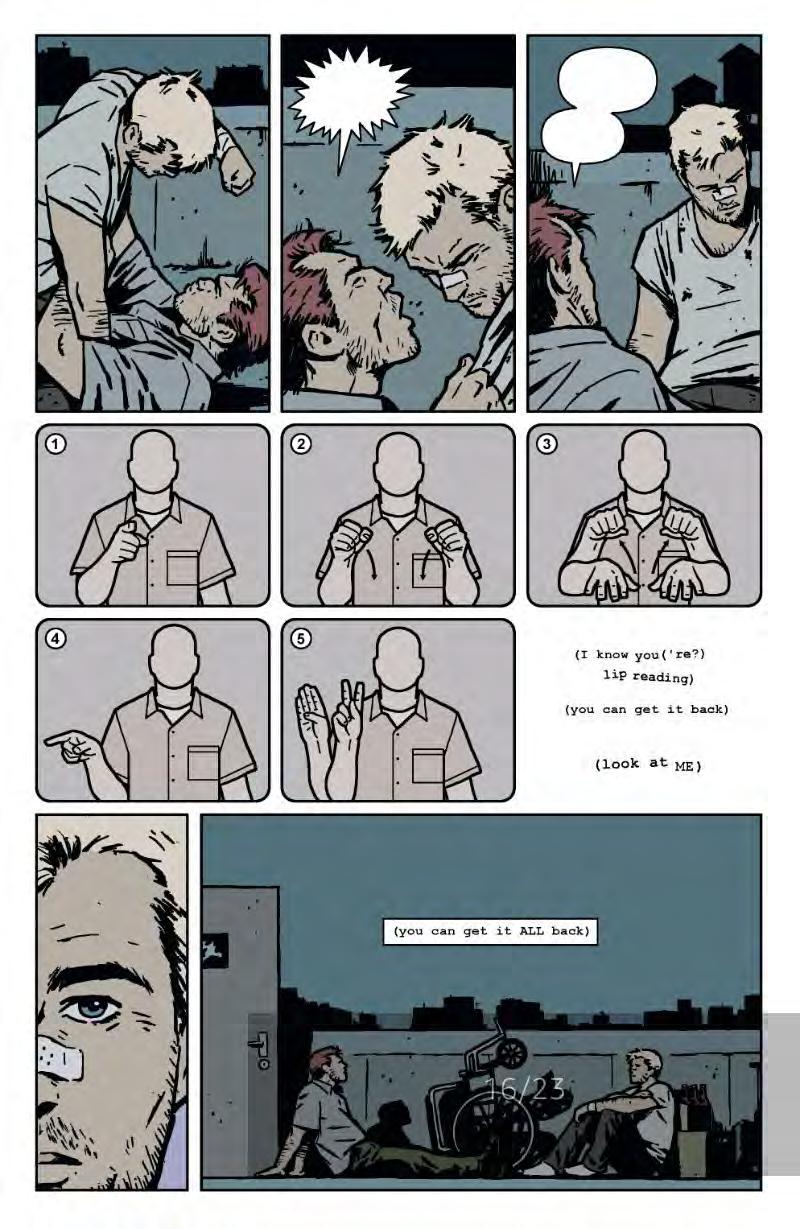
Two Short Shots
But there's a more serious honor. Innumerable white boys have gotten up on stage and said I owe it all to some old black men who never had two dimes to rub together. The Blues Brothers cut them checks. They can tell you and tell you they love you, but cash is uniquely sincere.
Neil Rest
Cynthia Geno on What her Holiday Would Be
Baconmas.
It’s after Xmas, but before new year’s day. Everyone gives their friends some bacon, so we can all have cele- bratory meals of bacon in the new year. Everyone has small immediate family meals with bacon at no speci- fied time of day, preferably without changing out of their sleepwear.
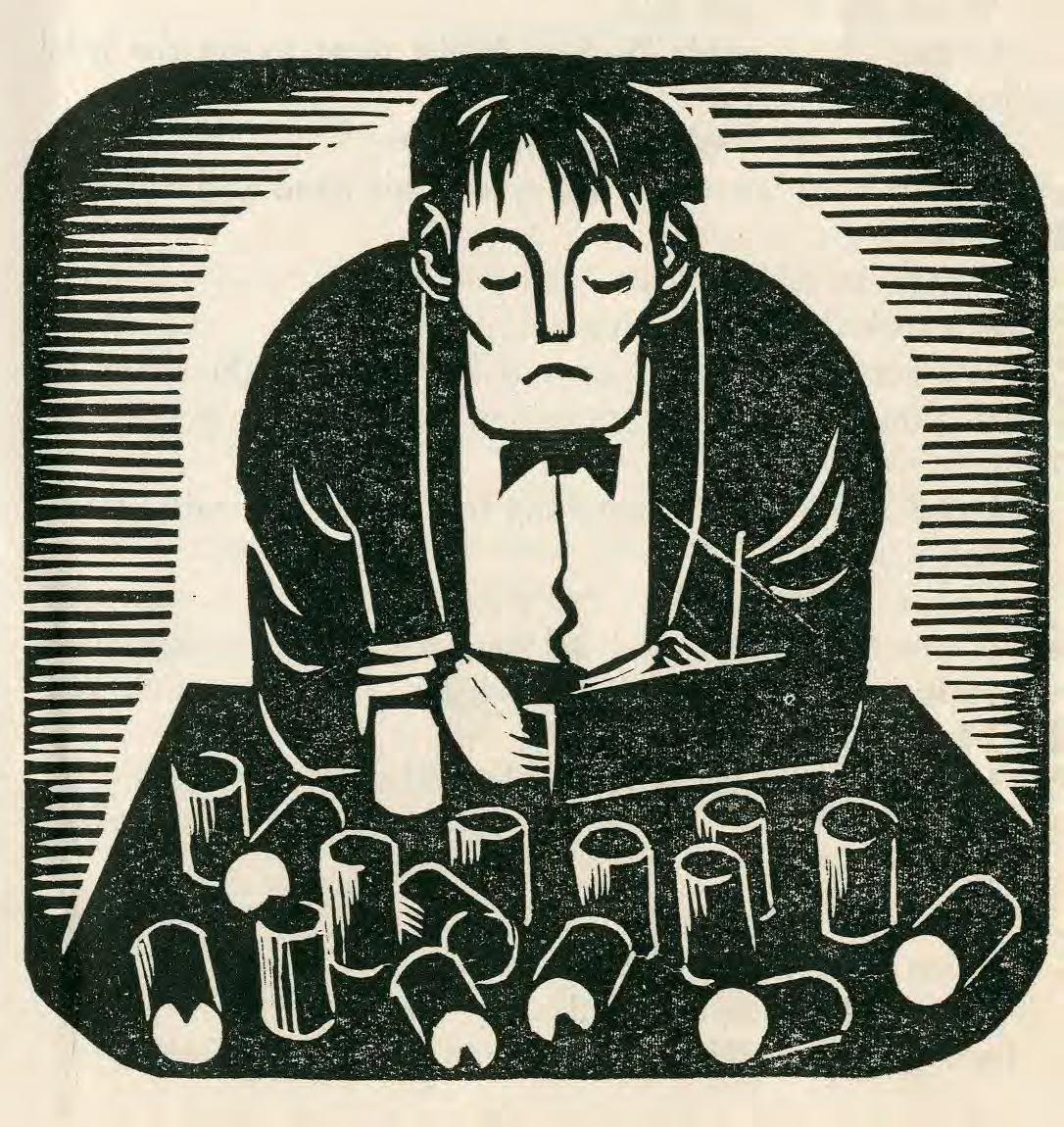
Kindness during Covid by James Bacon
There is no denying that those who have encountered Covid 19 have had a shocking time, and indeed, the losses, appalling initially, soon become numbers. A frightening prospect for us, but always something that is close to home. More directly for me in March 2020, were concerns about my 70-year old mom sheltering due to COPD, my Nana at 94 in a care home, utterly isolated, where there were unfortunate losses, and my in-laws, in their eighties, needing support. Occasional Covid assistance was required, and I ended up doing a few odd jobs to help people out. While in work we struggled hard to keep the trainees working towards their goal of becoming train drivers, while time in the cab was prohibited. That struggle was worth it, and astonishingly, 11 of them became drivers during this time of Global Pandemic. How long ago was March 2020? The year had started well, and I have warm memories of a comic signing by Maura McHugh and meeting Lynda E. Rucker in London, progress was made with Smofcon Lisboa and there was a site visit, and then the week before the lock down, saw me in Croydon. A lovely afternoon at Croydon Fandom Central with Claire and Mark, and then, I collected 1600+ comics from a Croydon reader who was giving them away., thereafter known as the Croydon Com- ic Hoard. This was the start of a run of kindness, that I had not anticipated, and which I tried with determination to share.
To Glasgow, and the Commando Comic Swap Meet event and my pal Steve bought 1000 Victors for £40. A bargain, a lovely welcome, and some time with Mark Meenan, and the first Friday Whiskey night with the Dublin 2019 team. Albeit I was in a Bund Halle and drinking my now favourite beer, Schoffenhoffer, listening to an Oom- pah Music rendition of Star War, but I was with them. Gadi Evron had come up with some ingenuity, he is like that, and so we, the Dublin 2019 committee, or most of us, or some of us, depending on availability started to meet on Friday nights, and by golly, I have had some 6-hour ses- sions with that gang. Sometimes it is only a dozen commit- tee, sometimes more but it is lovely to chat, free of re- criminations or judgement with a team of good people. Last year I consumed 3 to 4 times my normal alcohol con- sumption. Soon, the kindness flowed. As lockdown kicked in, in April 2020, I continued to send letters by post, but increased the amount. Val Nolan from Limerick, well known for his writing mentioned a project, and I asked him to see this work, and soon it was sent to me, and I printed it and enjoyed it thoroughly. I was astounded by Lynda E. Ruker's piece in Black Static, wonderfully capturing thoughts on how people are. Meanwhile I started mailing comics to Chris Garcia, passed some 500 straight onto Stef in a weird drive-by method on the way to work, which was some sort of cross between railway post and air drops from a Hercules, from the Croydon Comic Horde. You see I had an official letter allowing me to drive to work, but were 500 comics a life or death issue, perhaps not, so I barely slowed down on route and delivery was made.

Some of the hoard was swopped and I made a purchase of Battles and so Battles started to get redistributed, more to Chris of the Garcia Gang, to Steve Dean and also Rich who I cannot recall. Mark Plummer had not- ed the Victors in correspondence, and so was now interested in Will O the Whistle, an impressive invasion story, with an unexpected history, but where a Steam Train Driver from Wales is part of a British cold war gone hot resistance. Steve had some, and so these were dispatched, and then Vic Whittle, sent the two that were missing and Mark had the run. Vic like many other interactors is a fan on a Facebook group and re- sponded when I asked, and that was like so much. These War Comic Fans, are an agreeable bunch.
Family was important, and so Mom’s 70th birthday went virtual, which while nice, was in her own words ‘a bit shit’ and I love that about mom, her honesty is empathy, things were shit. Fandom also kicked in, and whenJourney Planet got a Hugo nomination, we were very excited that Ann Gry was now the first Russian fan to be nominated. As before there was some discourse about the importance of recognising fans, but once through that turbulence, it was a lovely recognition. Yet also, there would be no Eastercon. The impatience of fans was palpable, and of course difficulties ensued, yet the con was cancelled. Post continued outwards, to the nieces and nephews, to all those in my address book, with frequency to CFC and of course home to family, often stuffed with small things. I used stamps as decorations, and indi- cated clear thanks to all postal services involved. As I went in and out to Paddington it was eerie, strange. Monday morning at 8.30am in April was unreal, no one at the tube stations, the station itself deserted. I have been in the station hundreds of times when it is like this, 1am or 5am, but never at 8.30am. I wandered and took it in. I missed out on comics, well, I had ordered Action 2020 via the Rebellion website and it never showed up, I waited and waited, and then I sent as nice an email as I could, and received a lovely response, and a refund... A refund. That was not really what I wanted, but the post was in utter disarray, as were lots of things, I could appreciate it, and appreciated the post people doing their solid work. Letters to the USA were taking time, longer than ever, and many depots were faced with shortages, and in those early months, it was hard. Anyhow, I said on a Facebook group, what had occurred, and a fellow member said, 'would you like a spare', and sent it to me, no charge whatsoever. Kindness. The cons began to fall, after Eastercon it was Enniskillen and Lawless, Satellite all started to cancel, a trickle which eventually became a flood, meanwhile ConZealand was faced with the worst disaster any worldcon had ever known, no con. Not since World War 2 has there been no Worldcon, so that team took the strain, and were in the forefront of delivering an online proposition. The decisions and choices, truly existential for everyone in- volved, and while cons did go virtual and show it was possible, this was a totally new exercise in management and delivery and at the time when it was go-no-go genuinely new ground needed to be broken. On ConZealand went, and the saddest, damnd- est moment I have seen in my time of watching Worldcons, was when we watched the video of Kelly and Norm, in Wellington, walking into an empty auditori- um. I just cried. No one can understand what they tried to do, what they had to fight against, and what they achieved alt-

hough I am certain they felt it, I felt it for them. To work so hard for years and years, to achieve something, and then be faced with going virtual, they did their best. As ever fans were understanding, empathised and supportive. Well most of them. The post was forever bringing me a smile, and then a Lego Train turned up, I was utterly astonished, how was Mark Slater to know that I had coveted Lego Trains as a youngster, and that I was dead keen on this Locomotive when I heard about it, but was not able to see how I could get it, as it was free with a purchase, and now it turned up. I was so pleased, it went straight into pride of place next to the lightsaber and Bladerunner Whiskey on the display shelf. I was delighted. And smiled. Information is king, writing is fun, and during this time I found myself researching various elements. Colin Noble a well-known comic book fan, who I had met only in 2019 was the veritable encyclope- dia comicana, and I was engaged with him over a number of different comic book things, be it V for Vengeance from Wizard or Island of Hate, which I am still trying to track down (Battleground #14 from Fame Press 1964) and we corresponded mostly in Facebook Messenger, but also with phone calls. Vic Whittle who has scanned over a million pages of comics, was likewise full of help, and if I had to find something, I could message him and within hours, a scan would arrive showing me exactly what I was looking for, or needed to check. I only met Vic in 2021. My writing was as ever, varied, and I found fabulous help on an article I was writing about Flann O'Bri- en and trains. First Nelson Poots of the Railway Preservation Society of Ireland was invaluable, I had found an image that I was looking for more information for, and he had guided me, I then went on to write the article and needed to check some things, and he again he was brilliant. I then was put in touch with Noel Playfair who willingly took a phone call, as I asked him about ele- ments such as 'full shut off' and 'emulsions'. A NIR driver, he also drives the steam trains for the RPSI. He was so insightful, and our conversation was fabulous and I was able to follow up. He was surprised at the literary connection and impressed. I of course was delighted to be able to speak to the last person to drive a partic- ular steam train, and be able to share that experience with expertise, firsthand My researched continued and I found some scans of CIE train consists, by Railway collector and author Jonathon Belmont. I made con- tact and explained what I was interested in, and he said he might have some documents in an archive that would be of interest, and then the mother load of documentation, all of its era, arrived, timetables, working


timetables, letters to Station Masters, instructions on the consist of trains, services with restaurant or kitch- en cars, exactly the stuff I was wanting. but I could never have imagined this level of detail. Sent into the box- es, green and back by the one that was red, entrusted and cherished, carefully transported. Of course, kindness flows in many ways, and as the summer beckoned and our own plans, looked at first unlikely, and then more likely, we sent out post ourselves, and hope that here and there, wild flowers blossom. Even though I was working, there was not as much going on sometimes, well sometimes. In one weekend, I dashed across the country moving a Washing Machine and then moving a person's belongings from a storage space that had lost its roof. Not much peril of course, but when they announced they were unwell with a cough, the next day, there were a few anxious days of isolation, waiting to see. Indeed support- ing Octogenarians was quite nice but with time in work, I would separate and isolate. Reading and researching became easier as the weekend crazy was not cancelled. I found an essay about RAF operations in WW2 in Ireland, and his really interested me, especially plans to build run- ways in Ireland, and so I wrote to an RAF Wing Commander, who had written a thesis on the broader subject, and it turned up and then over the weekend In fairness, post out has expanded exponentially, but also nice to get post in. And I have seen an amazing piece of art in progress this evening that reminds me of Dublin 2019 and then lovely emails from Gary Lloyd. Jayney Mack. And the work with Christopher J Garcia, Paul Trimble, Sara Felix and obliquely with the great Michael Carroll, let alone the many amazing contributors, or professionals giving their time or helping make connections, is unreal. The post and email was very generous. What began somewhat with Val Nolan and Lynda E. Rucker, in March,and then lads on the Commando, Battle, Warlord and other Facebooks, sent around comics, cheaply or free or swaps and even sent some to unconnected pals, Steven Dean lead the charge on that. In one week alone, comics have showed up, stamps from James Shields, some amazing artwork now on my wall, and more artwork of a character from Action. Kerry Kyle sent me some amazing Railway stationary, as well as ephem- era, and that was stunning to see, meanwhile, other kindnesses occurred, the Starbuck Mug Mafia worked hard t get mugs, and get them sent about, I sent comics to my niece on demand, only too happy to supply. Art was always arriving, Sara Felix like an industry in brilliance, and beautiful things turned up, won- derful pieces, stunning, framed or onto the shelf. I found a snake while walking and another living in the in- laws pond, which was exciting and then dug a vegetable patch in the middle of the lawn, because that is what one does! Charity things occurred, and I won a script, by Garth Ennis, which was quite amazing, and then got to bid for some artwork, again for charity, and that was awesome, the generosity of the artists, and organisation of Paul Trimble, working to improve things for people. Yet, it has not all been good. Nigel Poots, Colin Noble, both mentioned in this piece, and John Wyse Jackson, an incredi- bly brilliant man, writer, editor, and bookseller, left us for the great footplate in the skies. It has been of loss. Their knowledge and willingness to share, are missed, even now, as I contemplate questions I would like answered, but a harder loss for those who loved them. Covid struck and struck hard, col- leagues were especially hit, and that was not good. Yet there was so much kindness, in unex- pected communities on Facebook, fans across the world, who were brilliant and kind, and people who just cared for similar things. It was all amaz- ing is such a tragic and terrible time, and it con- tinues, thankfully.
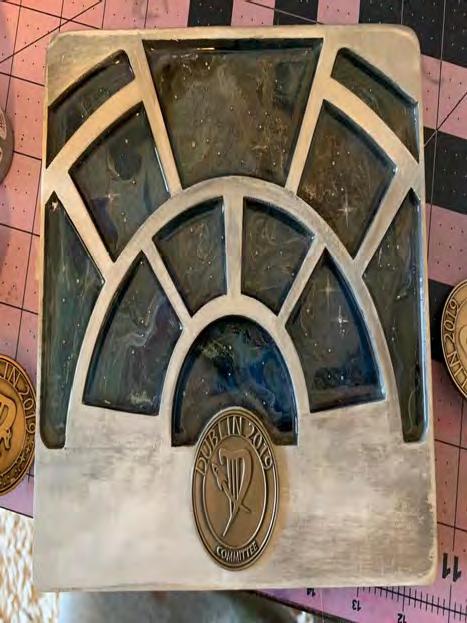


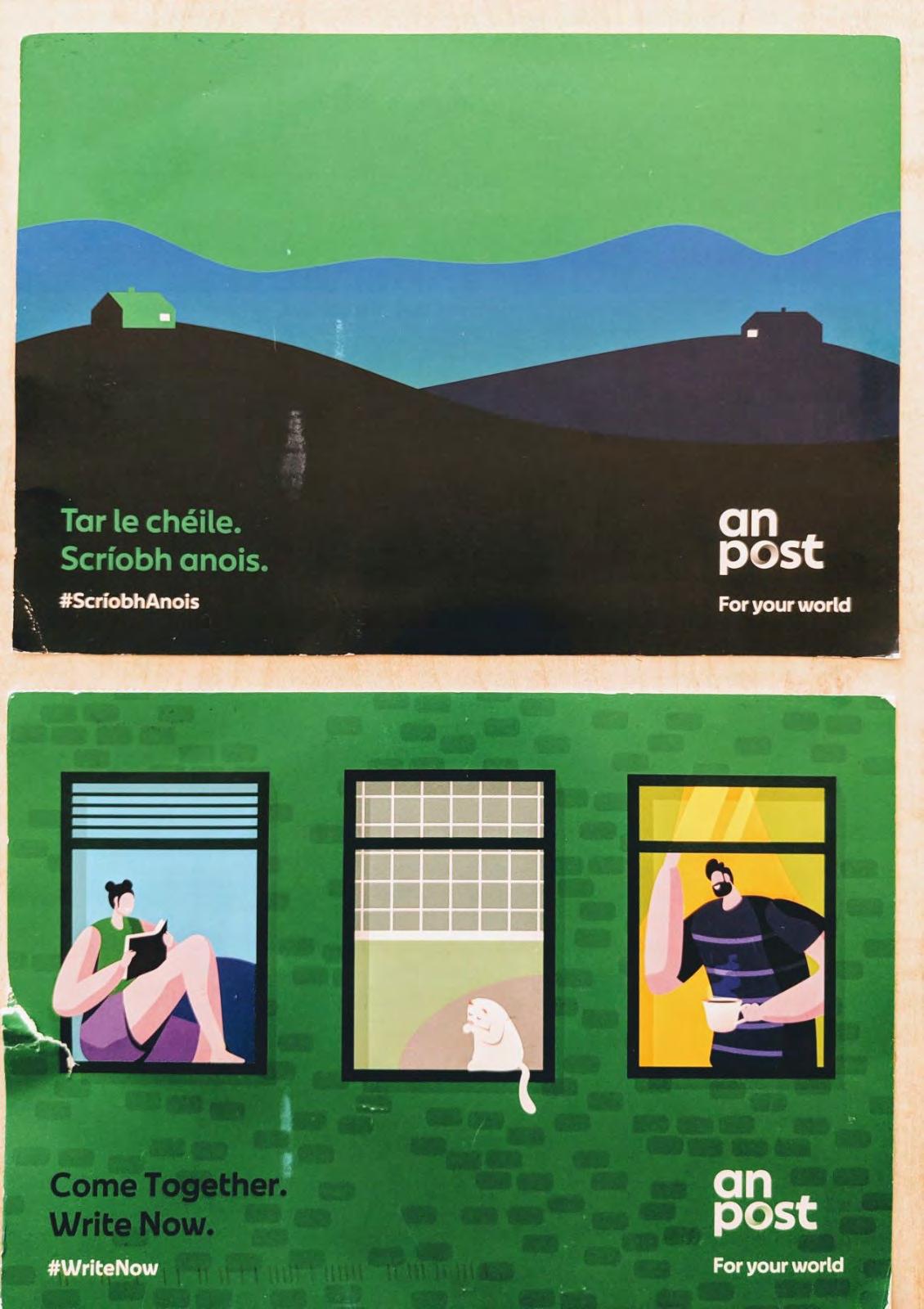
Editors Note: As a guy who has been gifted much kindness from James over COVID, I can say it’s been one of the most amazing things that my family and I received over the course of COVID. As someone who had it a little easier than most, it’s still amazing to not only know that people are out there, but that they care, and most importantly, that they want to let you know that they’re out there still. Few days were better over the last few years than getting on of those envelopes, covered brightly in multi-colored images of Queen Elizabeth, the familiar scrawled address, and wishes for Postal safety on the front.
